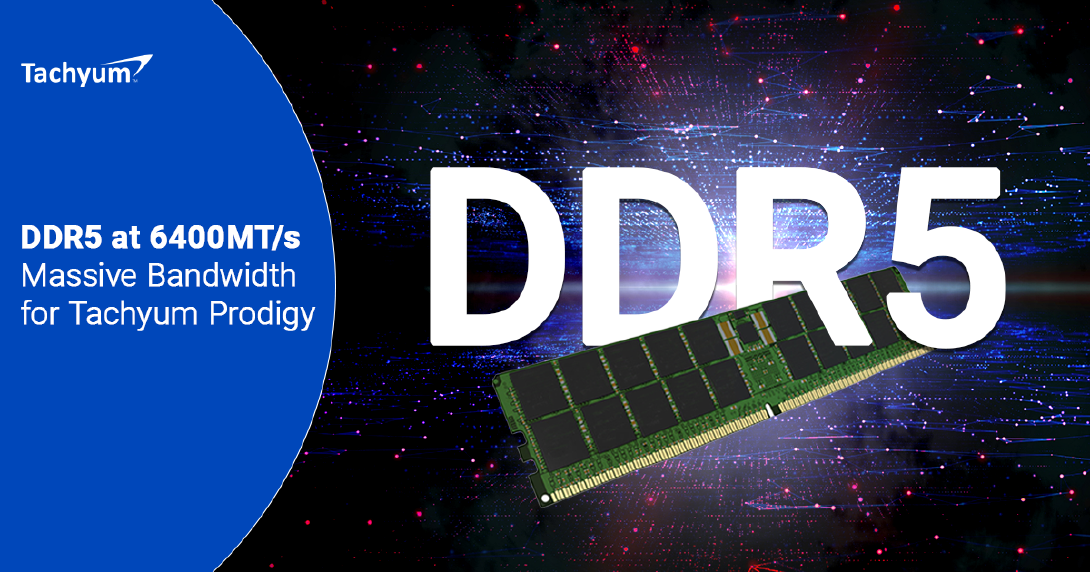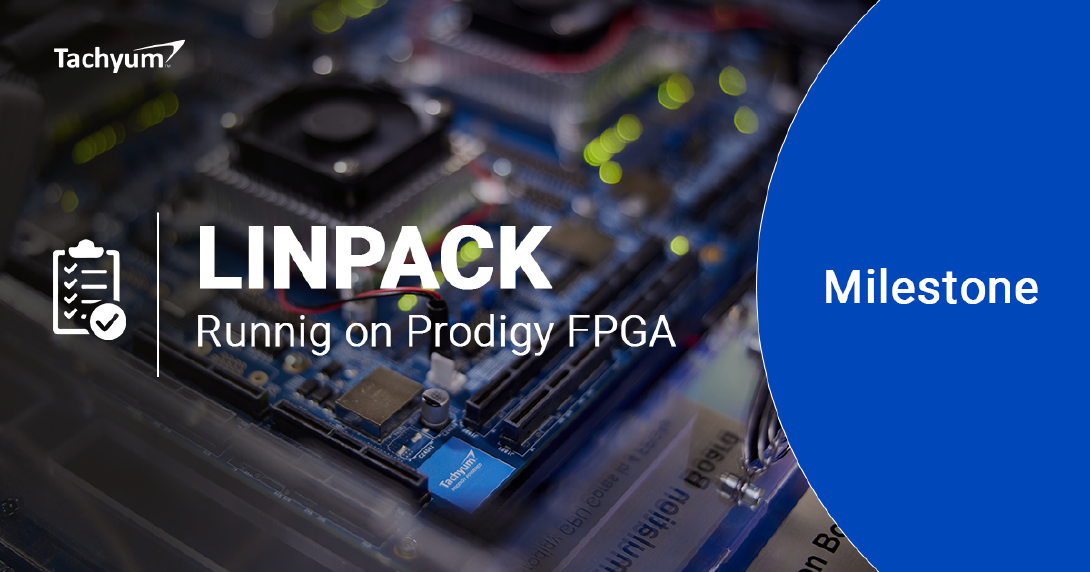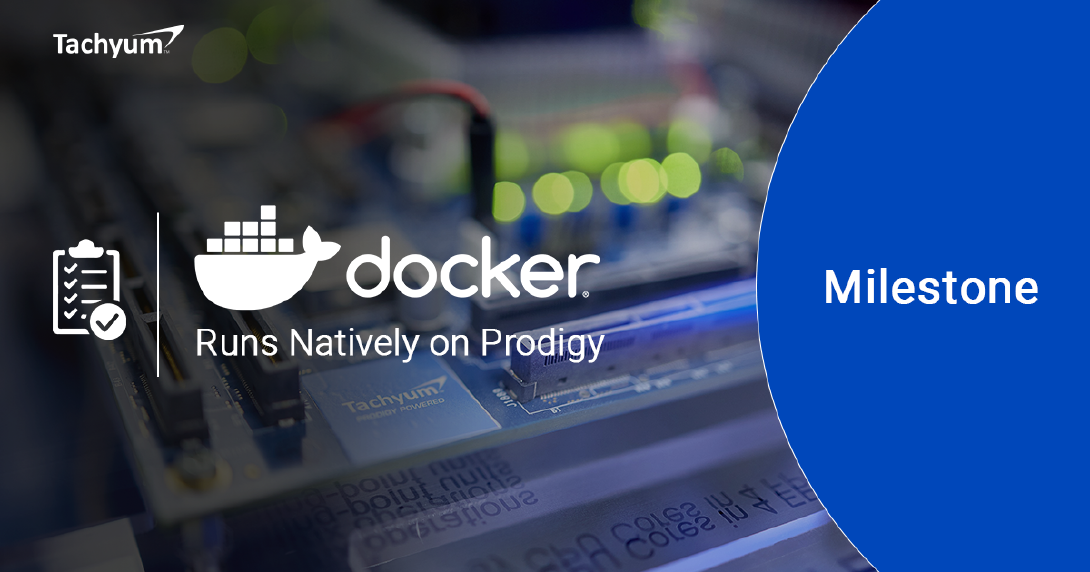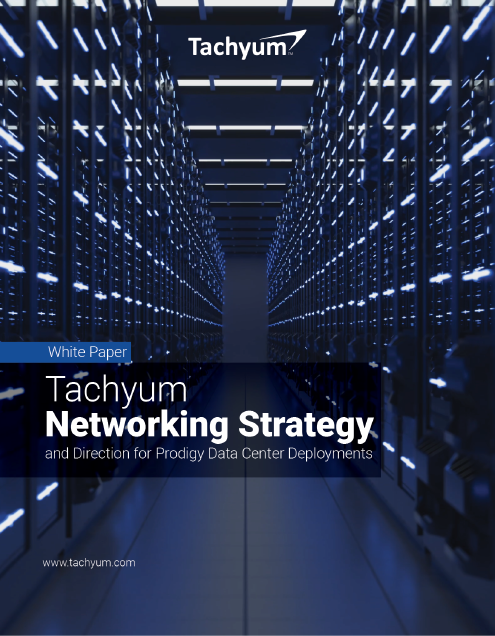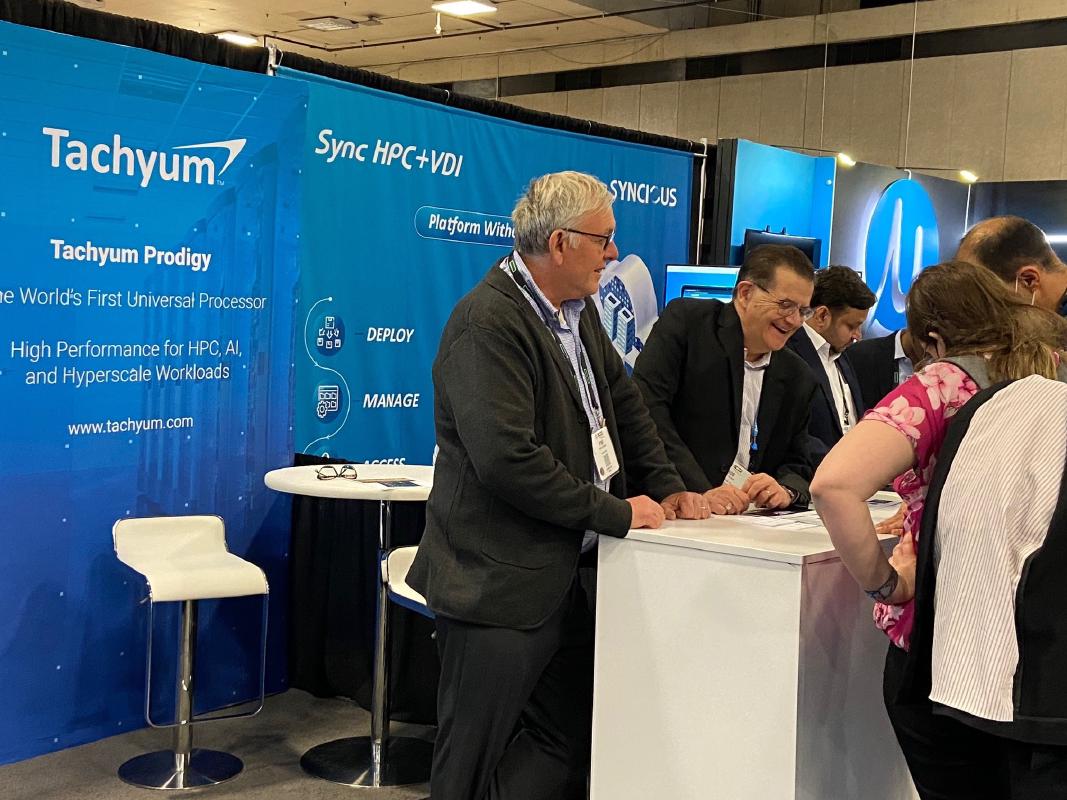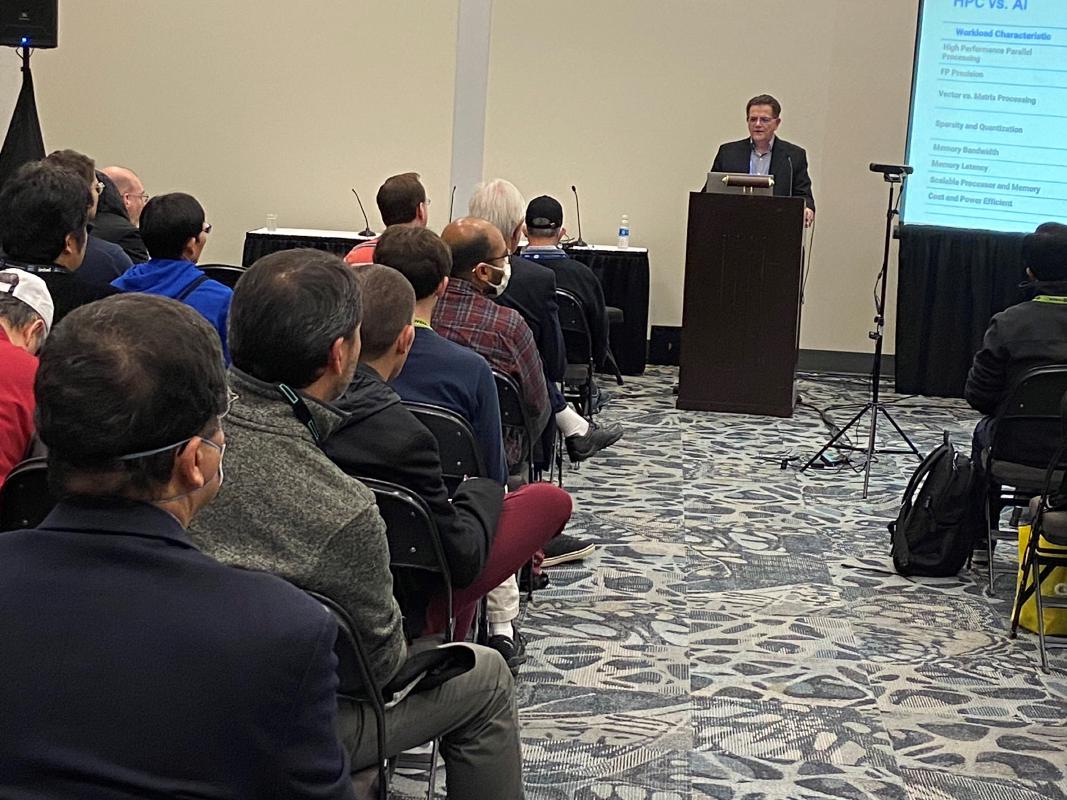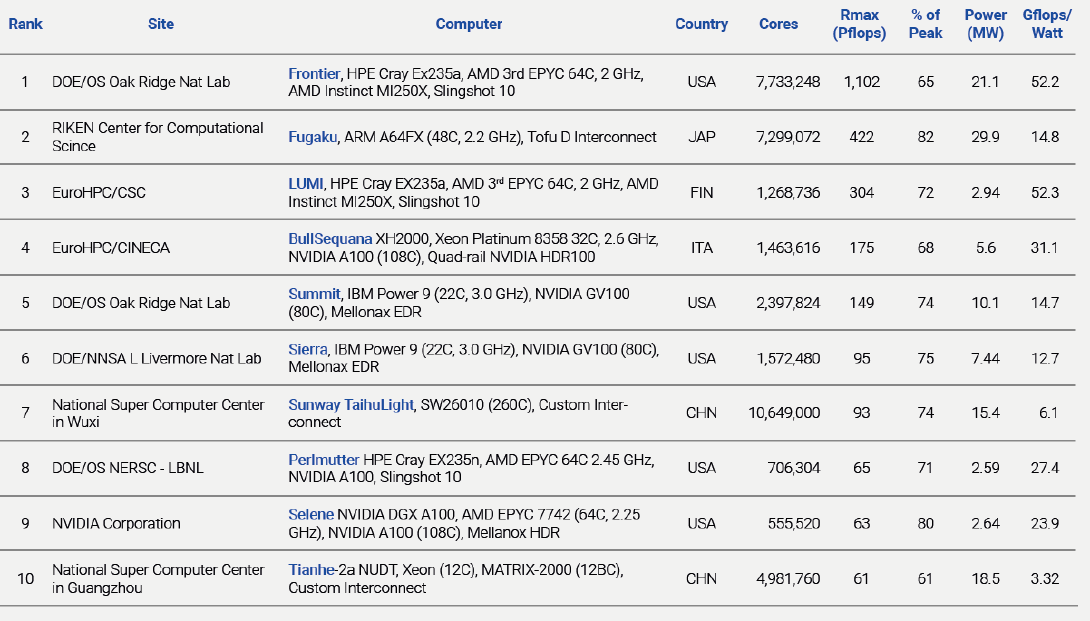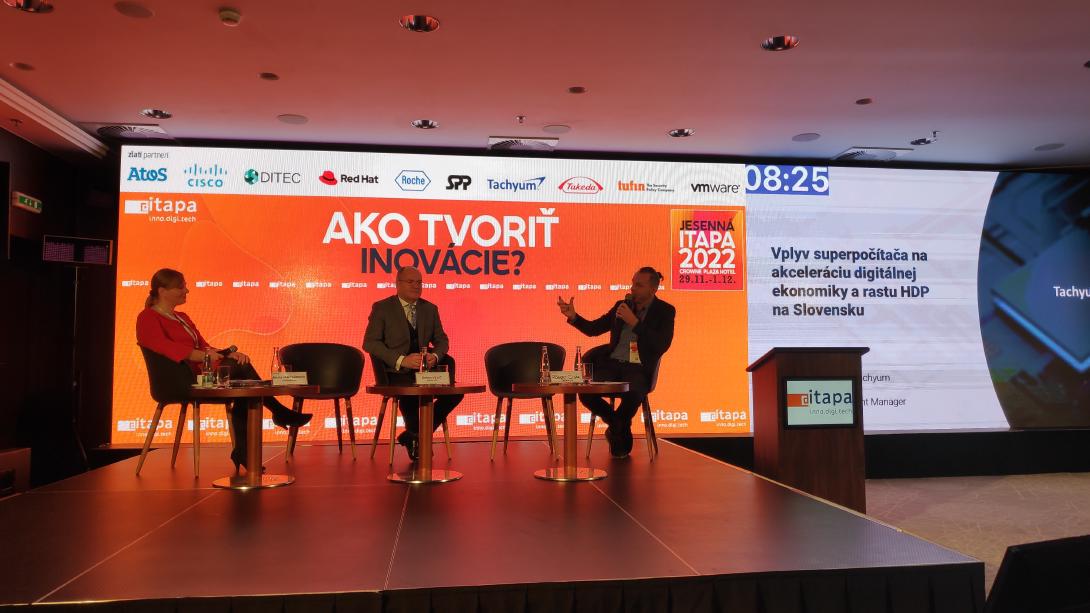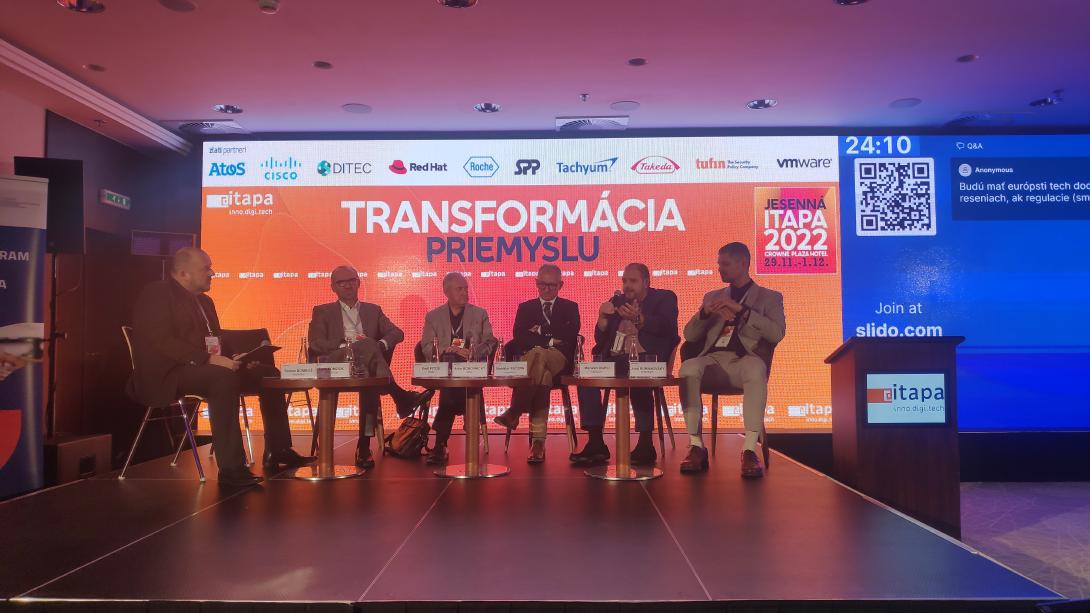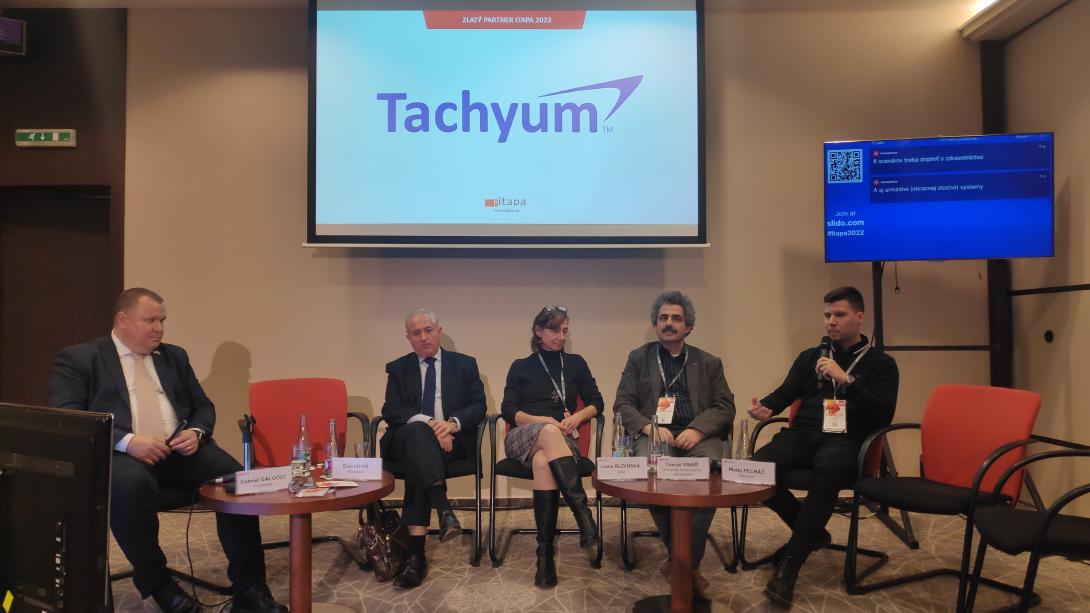 | |
| |
| |
“ |
Latest Technical Achievements |
Tachyum announced that the IP components – DDR5 RAM controller and high-performance, low-power DSP-based PHY – incorporated into the Prodigy Universal Processor have allowed it to achieve speeds of 6400 MT/s at nominal voltage for Prodigy chip which provides headroom for expected speeds of up to, or even over, 7200 MT/s. While consumer grade DDR5 UDIMM (Unregistered Dual In-line Memory Module) and SODIMM (Small Outline Dual In-line Memory Module) are shipping in small quantities, server grade DDR5 RDIMM (Registered Dual In-line Memory Module) is not shipping yet. The industry expects DDR5 RDIMM mass production and mass availability before the end of this year. This will be just in time for Tachyum Prodigy to enter the market as one of the first server processors shipping with DDR5 RDIMM this year. Tachyum has already received DDR5 RDIMM samples from all key vendors enabling Tachyum to validate DDR5 before tape-out this year. |
| Read more... |
Tachyum continues to advance towards production-ready status of its universal processor after reaching its latest milestone of running LINPACK benchmarks using Prodigy’s Floating-Point Unit (FPU) on a Field Programmable Gate Array (FPGA). This was achieved by running applications under Linux on the integer part of the processor and uses IEEE compliant Floating-Point Unit (FPU) to analyze and solve linear equations and linear least-square problems. The vector unit includes copies of 16 Floating-Point Units (FPUs) and additional shuffle and reduction operations. While there are many instructions to test in a vector unit, the Floating-Point vector operations are the hardest part of a vector unit, and that part is now successfully behind Tachyum’s product development team. |
| Read more... |
Tachyum`s team has successfully run native Docker under the Go programming language on its Prodigy emulation. This success is another key piece in the native Tachyum infrastructure software stack on the way to finalizing the company’s vision of Universal Computing Centers unifying cloud, supercomputing, AI and services based on unified and universal processors. |
| Read more... |
New White Papers |
Tachyum Releases Native Storage Solutions for Prodigy Based Supercomputers and Data Centers |
Tachyum released a white paper “Tachyum Storage Strategy and Direction for Prodigy Data Center Deployments” detailing a storage strategy to maximize system performance and efficiency for Prodigy® data center scalable deployments while minimizing cost and management overhead. The white paper showcases Tachyum’s system-level storage expertise with a storage networking architecture that offers flexibility and scalability in capacity and performance across any data center. The white paper includes options with both HDD and SSD-based solutions to address a broad range of customer demands.
“Tachyum’s world-class systems and solutions engineering teams have guaranteed optimal Prodigy performance and cost savings by developing server, cabinet, networking, and storage designs that are tailored to Prodigy, ensuring that Prodigy’s groundbreaking new CPU architecture will have the best possible system solutions for Prodigy clusters, including upcoming supercomputer deployments. In addition, by offering cutting edge solutions for both HDDs and SSDs, Tachyum’s solutions are futureproofed from the market dynamics in the storage industry as SSDs and HDDs converge to price parity.” Dr. Radoslav Danilak A video demonstration of Ceph client running on Prodigy is available on our YouTube channel. |
| Download White Paper |
Tachyum Unveiled Flattened Networking for Prodigy Exascale Supercomputers |
Tachyum unveiled a high-performance, low-latency, low-cost and low-power, highly scalable exascale flattened networking solution that provides a superior alternative to the more expensive, proprietary and limited scalability InfiniBand communications standard. Ethernet has a long history of providing networking solutions that have constantly evolved to address customer requirements and have consistently dominated the market. Data center networking topologies have likewise evolved from the traditional Clos architecture with multiple levels of hierarchy to various levels of flattened network topologies that reduce latency while saving cost and power.
“Our technical teams have accomplished a great deal this year, and the results speak to it: Prodigy is faster than any other processor for the hyperscale, HPC and AI markets. As we move to the commercialization stage and start our C round, 2023 will see a new era in data center computing, an end to extreme power consumption, resource underutilization, and the merciful death of the processor performance plateau that has stymied modern applications and stifled innovation.” Dr. Radoslav Danilak A video demonstration of Tachyum’s HPC networking for supercomputers can be found on our YouTube channel. |
| Download White Paper |
Events |
SC22 |
November 13 - 18, 2022, Dallas, TX, United States |
Tachyum participated in Supercomputing 2022 (SC22), one of the most prestigious international conferences for high performance computing, networking, storage and analysis, attended by more than 11,800 visitors. At the Kay Bailey Hutchison Convention Center in Dallas, we demonstrated recent innovations that enhance and accelerate AI processing, unique to Prodigy, the world’s first universal processor. Rob Reiner, Tachyum’s Product Marketing Director, in his presentation, “Advances in Processor Architecture Driving HPC/AI Convergence for Next-Generation Exascale Systems,” compared HPC and AI workloads, reviewed the trends that are driving AI and HPC convergence for supercomputers, and presented Prodigy and its revolutionary architecture that unifies the functionality of CPU, GPGPU, and TPU to address the demands of both HPC and AI workloads in a single device without needing costly and power-hungry accelerators. We attracted high-quality visitors to our booth and collected prospective business leads. The latest 60th release of the Top500 list of the fastest supercomputers in the world was announced at the SC22. The Frontier system at the Oak Ridge National Laboratory, Tennessee, USA remains the No. 1 system on the TOP500 and is still the only system reported with an HPL performance exceeding one Exaflop/s. It currently has achieved 1.102 EFlop/s using 8,730,112 cores. With an HPL score of 0.442 EFlop/s, Fugaku system at the Riken Center for Computational Science (R-CCS) in Kobe, Japan, has retained its No. 2 spot from the previous list. LUMI system installed at EuroHPC center at CSC in Finland has kept its 3rd position with a performance of 309.1 Pflop/s. |
AUTUMN ITAPA CONGRESS |
November 30 - December 2, 2022, Bratislava, Slovakia |
At the Autumn ITAPA Congress, Tachyum took part in three strategic debates. Robert Cisar, Tachyum’s Business Development Manager, presented the theme How to stop Slovakia from falling into poverty? and opened a very important topic – Slovakia is already lagging behind even the post-communist countries, not to mention the rest of Europe in digitalization. Digitalization from an economic point of view means the creation of new jobs with higher added value in all sectors of the economy, which is directly related to the level of well-being and the standard of living of the country. Millions in digitalization must be invested strategically so that they don’t just “overeat” and ensure the development of industries with a higher added value and prevent the brain drain from Slovakia. Legislation in the field of economic crime and intellectual property protection cannot lag behind either. Legislators in the world and neighboring countries are aware of this strategic need, invest in new supercomputers and protect their economic interests. Slovakia must also set its priorities and take advantage of the opportunities offered to it. Marwan Oghli from the Tachyum Business Development team took part in the discussion about the Transformation of Industry. As emerged from the discussion, Slovakia needs a stable legislative environment, enforceable law, transition from assembly plants to the industry with higher added value and technology availability. Matej Pechac from Tachyum AI team participated in the discussion What can Slovak AI offer? and explained what we are doing at Tachyum in AI, how we can accelerate training and inference of deep networks with our hardware innovations, why it’s important and what it brings to the world AI development. |
